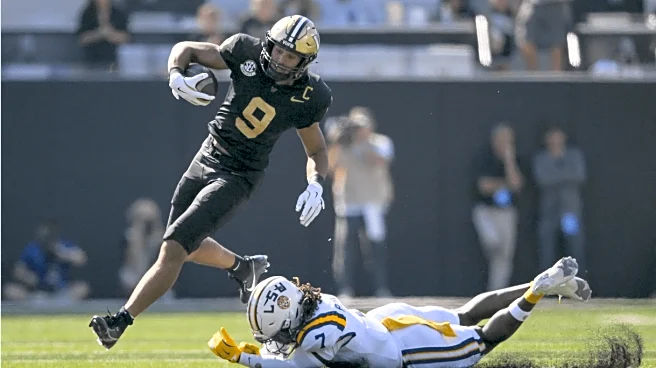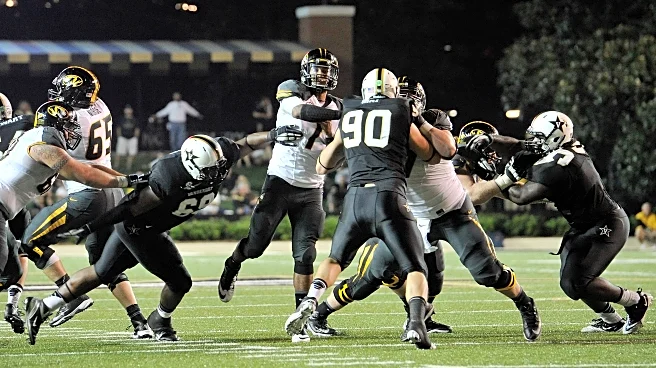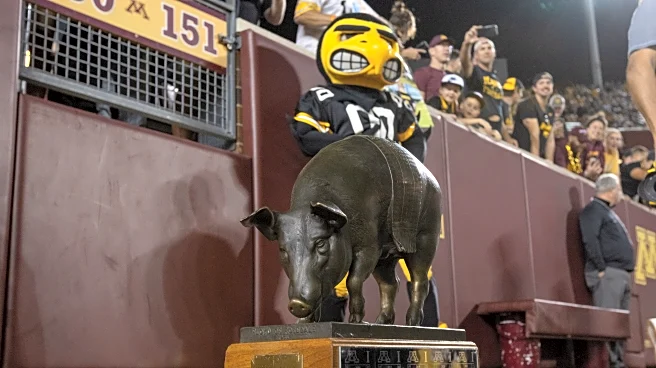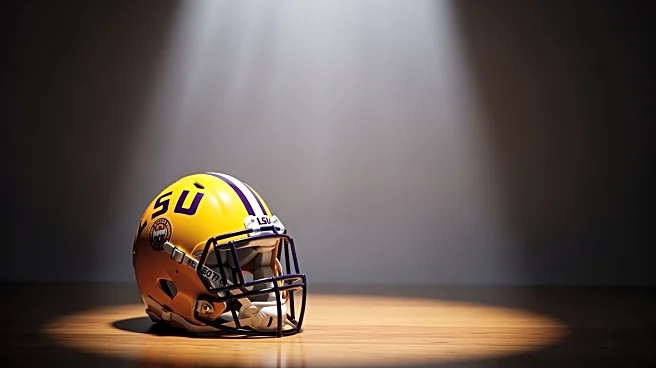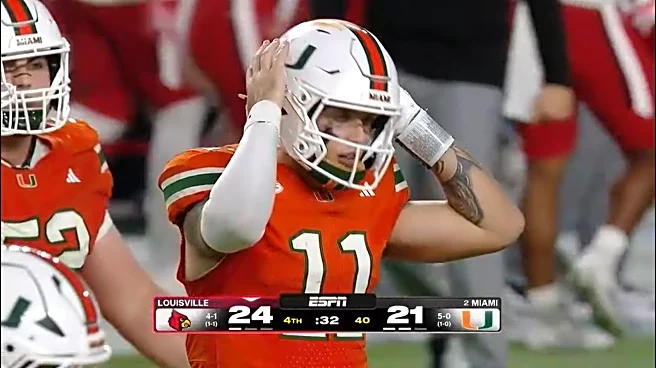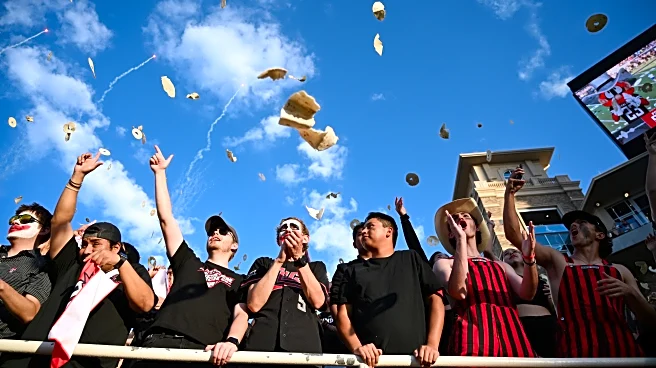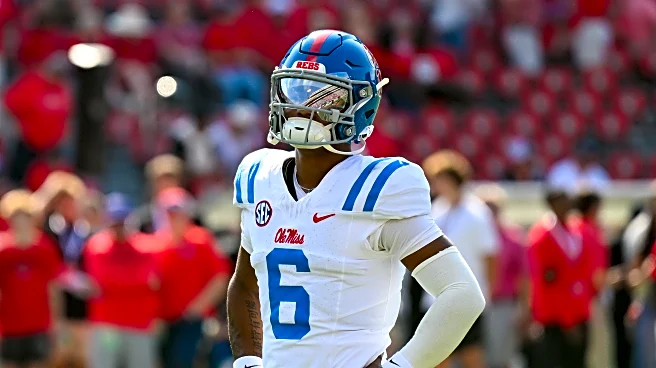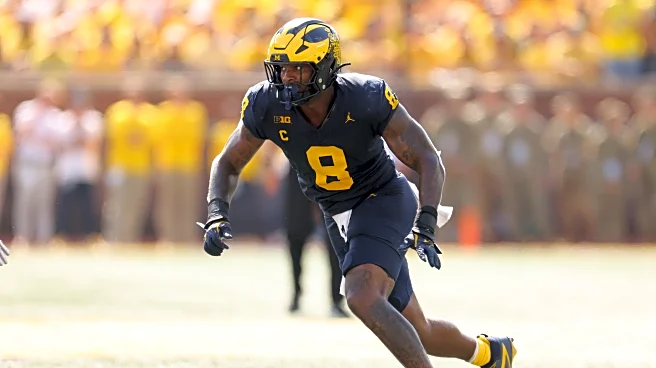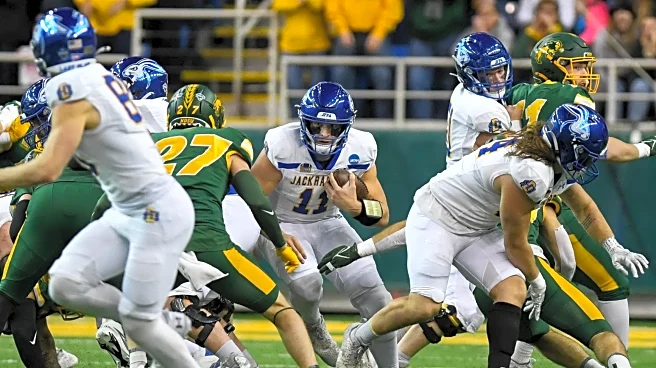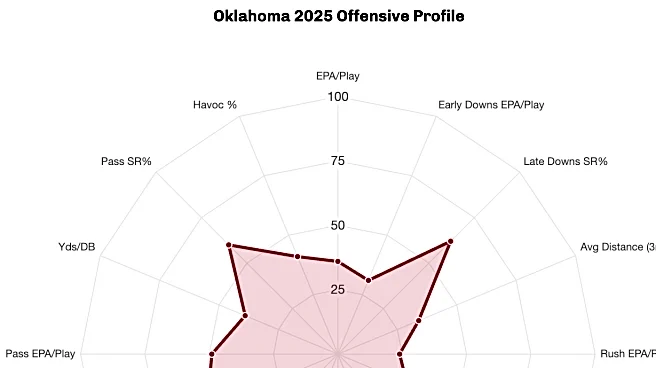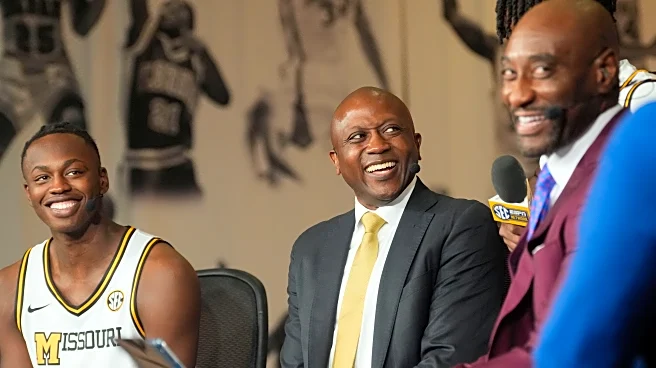
I think we remember eras by players. Unless a coach is at a spot for a long period of time, you tend to associate them with the players who embodied their achievements and/or failures. Who doesn’t tie
Ed Orgeron and Joe Burrow at the hip? Even despite everything that came after. I think that, when the Kelly era is over, and psychologically, it feels like we’ve crossed that line, there will be no player to define it like Harold Perkins. Sure, Brian Kelly pulled and oversaw the development of his own Joe Burrow, but the player that defined that first, oh-so promising year of the Kelly era was the 5 star freshman LB that broke the internet with 4 sacks against Arkansas, ran Bryce Young down for 4 quarters in Kelly’s only signature win at LSU (to date I suppose), and felt destined to become one of the greatest defensive forces ever to smack the WIN bar. Going back even further, Perkins was Kelly’s first test as a recruiter, the attribute that would define (and in my opinion, ultimately sink among others) his legacy-defining tenure at LSU. He won the battle against Texas A&M’s ahead-of-its-time NIL armada to keep Perkins in the class he inherited from his recruiting-obsessed, even to the end, predecessor, and it felt like he would spearhead an LSU regime that would finally allow it to hit its full potential as a serious program. The cracks started to form when the second Burrow, unlike the first one, saw his reign of terror end with no smoky championship denouement because of a defense that will color the nightmares of Tiger fans until nobody alive remembers watching Jayden Daniels play.
The lightning rod player most associated with the failure of that defense? Harold Perkins. Nobody blamed him, and nor should they have, but the perceived misuse of the prior year’s darling felt to all like the defining gaffe of Matt House’s legendary 2023 disaster. It sure felt like it to me, and I wrote as much at the time. I don’t think I was fully correct. Yes, I was dead right about why his role at the STAR, the same spot he occupies all these years later, was a disaster, but I was wrong that the solution was to move him to edge rusher full-time. The staff was right, he’s just too small. I compared him to Haason Reddick, but the fact is that Reddick has about 15 pounds on him and a lot of arm length. Ironically, Ole Miss has had success doing just that with a 4-wearing Perkins (Suntarine) of their own, but he also has length on Harold and rotates in and out. It was simply never a reasonable home despite the intermittent flashes of Von Miller-esque skillset as a speed rusher. It was the only club in his bag, and on standard downs, he could not hold up in the run game on the line of scrimmage. Back to the STAR role, that’s not an every-down option because it forces you into base defense all the time by putting him in place of a nickel, hamstringing you in coverage. It was first exposed by Brock Bowers and the legendary, positionless 2011 Patriots-esque 2022 Georgia offense in the SEC title and has been continually picked at ever since. So why the hell have they never seen it? Why didn’t they try something else?
The Winding Road of a Homeless Marvel
The fact of the matter is, they did, twice. They knew they couldn’t live that way. After a breakout freshman season in which his main role was a sheltered one. He shined as a situational rusher and QB spy on 3rd down as, technically, an Inside Linebacker. As the season wore on, the pressure mounted to give more opportunity to the young playmaker who wrecked things every time he stepped onto the field. After taking over the game against Ole Miss in a comeback that felt like the start of Kelly’s rise, Ole Miss HC Lane Kiffin gave LSU fans a great soundbite to demand more snaps for their young star:
“I think they did a really good job; I don’t think it was a lot of schematics. They started playing No. 40 (Harold Perkins) more which we thought they would eventually do.” “I noticed him on film, he was the best linebacker in the country out of high school, so he is very talented. They set him up as a spy and a rusher and he made some big plays.”
From there, Matt House had his marching orders….play 40. They did, and especially after Arkansas, how could they not, but they needed a role for him because ILB was occupied and Perkins wasn’t ready in his youth to handle such a complex position, so they put him at the STAR as an *Outside* LB. The OLBs in an NFL 3-4 are edge rushers, but in the hybrid defenses most college teams, including LSU of course, run (4-3 spaced front with 3 DL and an OLB type EDGE on the LOS) the STAR is just the nickel/SAM LB, and it gave LSU a good way to send him in pressure when he was out there. In obvious pass situations, the positions on the field get far less rigid with nobody tied to run gaps, and he was used as a spy and blitzer. He wasn’t out there all the time, but he was getting out there more and more often. When the season ended (after Georgia rang 50 on them, more on that later), Kelly and House knew they needed an every-down home for him that wasn’t a gimmick and didn’t prevent them from playing the types of defenses everyone must, in the modern game, live in. With his body type, the obvious answer was the position they recruited him to play: Inside LB.
That offseason, however, many, myself included, wanted him at EDGE full-time and not off the ball. The staff thought he didn’t have the body for it. At the end of the day, they were right and I was not. Whatever, I assumed ILB would be fine because he’s just that gifted. Then the Florida State game happened. He was lost. The rub is that ILB is, aside from QB, the position on the field involving the most pre-snap awareness and post-snap processing. Not only do you have to fit interior gaps *and* cover in general, but your alignments, gaps, and coverage assignments will change with different formations and even, after the ball is snapped, route distributions and run-blocking schemes. In the run game, your gaps can change on the fly if guys pull, as the DL can’t move with them, but you can. You have to worry about your initial gap, coverage checks, reacting if your gap changes, not only about following the pullers but how you’ll play them from a leverage perspective to funnel the ball to support. You have to know everything everyone is doing. You have to react and still play both instinctually and precisely through a ton of confusion. It is awfully hard, and Perkins couldn’t handle it. He was drowning, and Kelly knew it.
“What was missing? Well, I mean, you know, he’s playing a position for the first time,” Kelly said. “So there’s a learning curve there. He’s learning. He’s learning how to play linebacker for the first time. You know, we put him in a position last year where he was see ball, get ball.
“Now he’s in a position where, you know, he’s got to get over the top. He’s got a back coming out of the backfield. He’s got to be disciplined and can’t lose his eyes on the quarterback mesh. Fourth down, there’s a lot going on there, and he’s trying to sort it out. You’re catching a young player early on in his career, and he’s going through some growing pains.”
The debate about him as an edge rusher raged on, with people such as rising star CFB media personality and good friend in the space Max Chadwick of PFF making the case outright and making it forcefully. Again, for good reason as it turned out, that was still not much of a consideration. Despite talk of “learning curves,” they moved him off the ILB position the very next week back to the STAR, or as they simply called it at the time, “outside.”
“We wanted to free him up a little bit,” Kelly said. “He’s got a lot of responsibilities playing inside, and we just needed to let him go and let him play fast. We felt like with all the things that we had asked him to do, we probably slowed him down a little bit.”
The schematic realities that, to begin with, dictated his move inside did not go away, and as the rest of the LSU defense fell into complete disarray in a mostly unrelated string of malfunction, he continued to struggle. Amidst the spiral, they even tried him at true EDGE for a few possessions against Ole Miss. He was bodied in the run game as they had feared, and that dream was put to bed for good. The LSU defense would then proceed to strap up their helmets and bleed to death weekly until the lost season of a national championship caliber roster and Heisman QB came to a merciful end.
Unsurprisingly, the defensive staff Kelly had handpicked to start his tenure was gutted. It wasn’t that Harold Perkins destroyed that unit or anything. There was disarray within the staff, nobody could get their assignments clear, and overall it was a complete mess. Kelly pursued a fan favorite to fix it. Missouri DC Blake Baker, a Manny Diaz disciple who inherited a disaster from prior DC Steve Wilks and turned it quickly into one of the most fun, aggressive units in the nation, was coming home to the Bayou where he and DC Daronte Jones had previously turned a moribund, lame duck Orgeron defense into a wagon with the same style he took to Columbia, overnight after the HC’s firing was announced.
What did that mean for Perkins? Back to ILB! It had to work. It was the only way to do this properly so they could run a nickel-rooted defense like everyone else. As I said earlier, they knew this, which is why they kept trying to make ILB work. I thought Baker would fix it, I really did. I figured that House’s defense was such a wreck that you could never expect him to have a grasp of assignments and play well. After all, nobody else did! Baker’s pressure-heavy, attack-everywhere defense seemed like a natural fit. They blitz their ILBs a ton, they trigger into gaps, they attack the ball, and they worry about everything else second. He even got the coveted (and obviously cursed) number 7! It failed again. The fact of the matter is, there exists no defense that doesn’t impose the responsibilities I laid out earlier on its ILBs. They moved him to STAR again after another season-opening loss. A few weeks later, against UCLA, he sadly tore his ACL and was lost for the season. Even sadder, and I genuinely mean this, as I hate the implication of it despite the success as sports injuries are uniquely devastating to deal with emotionally, the defense improved substantially at the drop of a hat. The signature performance and win for LSU was driven by a gameplan that was both masterfully tailored and would not be possible with a LB type at the STAR (again, the spot of the nickel) position.
Perkins decided after the season that he was not shooting for the draft and he was not entering the portal, he was coming back for glory at LSU. This time, Kelly and Baker didn’t bother trying again to play him at ILB, they made him the permanent STAR. The cold, hard realities still hadn’t changed. The LSU defense, however, has been excellent this season. Perkins is even making plenty of flashy plays and contributing in run D. This (expensive) defense is incredible. The DL is oppressive in both run D and the pass rush, Whit Weeks is one of the best ILBs in the nation, the CBs are amazing with Mansoor Delane playing his way into top 10 pick territory and DJ Pickett/PJ Woodland alternating opposite, the Safeties are both playing incredible football, and Blake Baker is a master of his craft. This LSU defense, however, still has that weakness on standard downs they tried so hard to avoid, and it doesn’t have to. This unit could have been historic. Forget simply being the best in the country…it could have been one of the best in LSU history. That all leads us here. While Harold Perkins wasn’t exposed *as much* for what he did to the coverage unit against Vanderbilt, he was against Ole Miss. I truly believe LSU wins that game, even with an offensive implosion, without the few openings they were able to seize by picking at that limitation and its downstream impacts. Vanderbilt, however, didn’t expose him and Baker’s unit as a whole for what makes him weak as a STAR (mostly). Ironically, they exposed him for what made him a failure at ILB. The problem is that Vanderbilt’s offense demands assignment soundness, discipline, and high-level processing from everyone involved in run D, not just the MIKE and WILL. So, at long last, let’s look at the film from Saturday’s loss to not just Vanderbilt, but to the point of no return.
The Vanderbilt Game
The come-to-Jesus moment for this entire thing came, admittedly, when I least expected it. While again, Ole Miss was the real exposure, the defense played well enough overall to not be the story. This was not the case against Vanderbilt. I thought that this would be a game you actually *like* to have a Perkins in the STAR spot. With a run-heavy offense that uses 2 and 3 TEs pretty frequently and a QB you’d love to be able to spy, it seemed like the right game for a guy like him. As I said though, this offense will challenge you mentally and punish you for playing with your head down, both figuratively and literally. Perkins was, like his short days at ILB, once again drowning.
Vanderbilt doesn’t always run something crazy on every snap, but the threat of the option, misdirection, and RPO/PA off of everything is enough to get defenders thinking more than playing. On this snap they’re just running duo, and LSU is one-gapping (each defender is responsible for one gap, simple and aggressive) from a loaded box, as they often will. With the 2 TE attached to his side, Perkins at the STAR is responsible for the D gap between them. He’s slow to get there, taking a couple of beats to diagnose what’s going on and catching a block from a guy who is not hard to shed, ending up out of his gap where the run hits.
Playing instinctually is lauded as a good thing, but it’s implied that you’ve honed enough awareness and reaction to do so without being liable to mistakes. As the overhang with the S rotated down inside you, the STAR is the last run defender to the outside on this play, which means Perkins has to take the outside of this arc blocking RB. You have no support outside, so you have to force it back to where you do have bodies. Instead, he steps down hard and inside to engage the blocker and pursue the ball, giving up the edge to the ballcarrier. You can see ILB Zach Weeks see him do this and get on his horse to try to run this down and bail him out.
The RPO has been a great way for teams to attack the slot against LSU, especially last season. It’s been a bit tougher now that LSU is more comfortable living in man coverage and bringing a S into the box, as all of this eliminates the conflict by covering routes tight without sacrificing numbers in the run fit, but they can’t play like that every snap and it’s still been a big tool for offenses. The STAR is the most important position on the field when it comes to defending the RPO. Because many of these routes are going to the slot and are off of you, it’s important to be able to leave your overhang defender out of the run fit and out of the box so he can deny the easy answer and force the give. While he is out of the run fit here, like you’d want, he bites on the bubble and abandons his post. With the O unable to block the SS here, who has a free shot on the screen, he’s the guy you want to run that down here with Perkins staying on his guy. He chases it like a bass chases a topwater and opens up the curl for Pavia to take an easy chunk. Before even getting into the schematic limitations he imposes, which apply much more to volume passing games than teams like Vandy, there was the same lack of awareness and assignment comfort that has led to a hugely disproportionate amount of the stuff this otherwise elite D has both given up and gotten away with.
The coverage impacts downstream are more severe than just the matchup issue in the slot with Perkins itself. Man coverage is done on a hierarchy. The outside CBs take the outside WRs, the nickel (again, aka STAR) typically takes the slot WR, the SS takes the TE, and one of the ILBs will take the RB. With Vanderbilt in 11 personnel with Eli Stowers here, LSU does not want Perkins matching up with the talented college-type receiving pseudo-TE. LSU has done a fair bit to cover up the matchups he gets in coverage, but because they have 3 WR and a “TE” that is a great pass catcher, Vandy can rig the matchups without a 5th DB on the field.Baker just isn’t comfortable with Perkins covering him. All season, and keep in mind that this is a team that plays a ton of man coverage, LSU has mostly often altered that matchup framework to shelter Perkins. Against Clemson (and many other times), LSU would put Perkins on the TE with one of the Safeties covering the slot. Vanderbilt exploits it here, putting 3 WR to occupy the main coverage defenders, but with Stowers at the Y spot, the need to shelter Perkinn from his main job makes it a challenge to deal with dangerous targets like Stowers. Here, ILB DaVhon Keys ends up man to man on Stowers, producing an easy first down. Because one of the Safeties has to cover down over the slot for their 3rd LB Perkins, that takes the S away from manning the TE. From there, there’s nobody left to cover the Y except WLB Da’Vhon Keys, who is hardly equipped to match such a productive college TE in man coverage.
Even the tracking of the QB scramble drill wasn’t there! Nobody can ever accuse him of not being good at this, but Diego Pavia was still able to get the better of him. If you’re Harold Perkins and you can’t run down a QB consistently when he tries to leave the pocket, there’s just not much you’re bringing. Overall, with misdirection, option football, and a hell of a playmaker at QB, Vanderbilt put Perkins in a blender.
The Road Not Taken and The End of the Line
Harold Perkins is not the reason the Kelly era is taking on water. The iceberg came in the form of another wholesale failure on one side of the ball and an unwillingness to address issues proactively. It’s hard to come back from having to gut the staff on offense two years after doing the same to the defense. Recruiting was an issue too, with a persistent failure to close leaving LSU short on organically obtained top-tier talent (especially at QB and WR, which should never happen after Burrow, Daniels, Chase, Jefferson, Nabers, and Thomas) to set the foundation upon which a *finally* modernized transfer acquisition operation could build a tower that could pierce the clouds of college football with purple and gold.
I do think that, despite not being the cause of Kelly’s failure, Perkins’ career is the tapestry that displays the entire tenure. From a promising start, to roadblocks we allowed them to try to fix, to the denial and stubbornness that would ultimately drain our patience, the story of Brian Kelly at LSU is reflected in the arc of its most tantalizing and frustrating player. The fact remains that this was a rake they did not have to step on. They knew they could not live in base D with a player like this at an otherwise DB spot in the modern game. We know they knew this! They tried numerous times to avoid it! When push came to shove this offseason, and they were tasked with a choice between an unpopular, but pragmatic and forward-thinking personnel decision to reduce Perkins’ role all the way back to the rotational and sheltered, but impactful one he enjoyed as a freshman and stubbornness, Kelly barreled headlong into intransigence. It’s the worst kind of stubbornness, because I know he knew better. Imagine it, Delane and Pickett outside at CB, the sticky (and excellent-tackling) Woodland at STAR, and the two stud Safeties manning the middle. That is a secondary worthy of a school that calls itself DBU, one that, paired with a front 6 this good, leaves Blake Baker with nothing but options and hands offenses nothing but brick walls. That’s not to say Perkins shouldn’t be a major factor. He should come in at the STAR when base defense is appropriate against heavy personnel and run-heavy teams/situations, and he should always be out there resuming the 3rd down role that made him a household name 4 long years ago. In neutral situations where his weaknesses are stressed, take him off, but in obvious pass situations where he is truly that game-wrecking multitool in an environment where his positional limitations do not exist, let him loose. The same lack of pragmatism behind this multi-year miscue is the same that has eroded the grand Kelly experiment in every phase. That defense, left only in our imaginations, could drag even this offense to the CFP and even serious contention, no matter how frustrating that side remains. Ironically, you can look to last season’s Notre Dame team for an example. I suppose it isn’t technically too late, but it sure feels like it.
